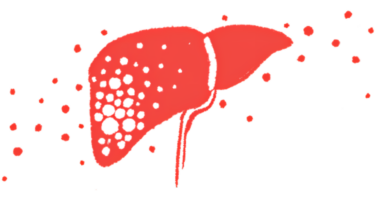Finding Hope With Hemophilia This Holiday Season
Treatments have many celebrating, while others are left behind

Christmas season has always been stressful for me. I live in Florida, but my family lives in the arctic tundra of Illinois and Wisconsin. I can’t understand why my mom and I travel north instead of having everyone come to us in sunny Florida, but as I often say, “It is what it is.” As I write this, in a few days we’ll be heading north, even though a blizzard threatens to derail our plans. So we shall see.
The year 2022 has been stressful, too. Hurricane Ian barreled through Southwest Florida and left many of us working through insurance issues and needing new roofs. Recovery will take years.
A year of innovation
On the bright side, 2022 has brought great hope and innovation to us in the hemophilia community.
For those with moderate and severe hemophilia A (factor VIII deficiency), the medication Hemlibra (emicizumab-kxwh) has rocked the treatment world and made lives much more manageable. Hemlibra, approved in 2017 by the U.S. Food and Drug Administration (FDA) for children and adults to reduce the frequency of bleeding disorders, is administrated by an injection instead of an intravenous infusion, like traditional factor products.
Parents are thus spared the terror of trying to find a vein in their squirmy toddler, and children can lead more normal lives.
In January, Hemophilia News Today columnist Joe MacDonald wrote:
“Thanks to Hemlibra …, coping with my boys’ medical issues is easier than ever. Gone are the days when three weekly intravenous infusions were the norm in our house. Now my sons do a subcutaneous injection into their thighs once every other week. As a result, both of my stinky boys appear healthy, and breakthrough bleeds no longer rear their ugly head. The boys are experiencing a level of normalcy that was unheard of for people with hemophilia only a few years ago.”
‘Christmas disease’
Hemophilia B, a less common version of hemophilia, is also called the “Christmas disease.” Although the name sounds jolly, it comes from Stephen Christmas, the first person diagnosed with hemophilia B.
For those with this condition (factor IX deficiency), the gene therapy Hemgenix (etranacogene dezaparvovec), FDA-approved in November, promises a possible “cure” that may last years. However, at $3.5 million a dose, CNN has dubbed it the most expensive drug in the world.
I’ve used the same factor products for my hemophilia B and von Willebrand disease for over two decades, showing that these new innovations have left many behind. Women and those with mild hemophilia are usually not included in drug trials, so many newer treatments are unavailable to me. In addition, drug innovation for von Willebrand disease has lagged far behind that for hemophilia.
As the year draws to a close, let’s challenge ourselves to continue progress in the hemophilia community for all, including women and those living in underserved countries.
May your holidays be joyful, happy, and healthy.
Note: Hemophilia News Today is strictly a news and information website about the disease. It does not provide medical advice, diagnosis, or treatment. This content is not intended to be a substitute for professional medical advice, diagnosis, or treatment. Always seek the advice of your physician or another qualified health provider with any questions you may have regarding a medical condition. Never disregard professional medical advice or delay in seeking it because of something you have read on this website. The opinions expressed in this column are not those of Hemophilia News Today or its parent company, Bionews, and are intended to spark discussion about issues pertaining to hemophilia.








Leave a comment
Fill in the required fields to post. Your email address will not be published.